VISUAL ART: Swimming in Heavy Weather
Tim Tozer's expressionistic seascapes are painterly and atmospheric and, according to critic Mason Riddle, they offer a strikingly modern reinterpretation of the centuries-old traditional "figure in landscape" genre of painting.


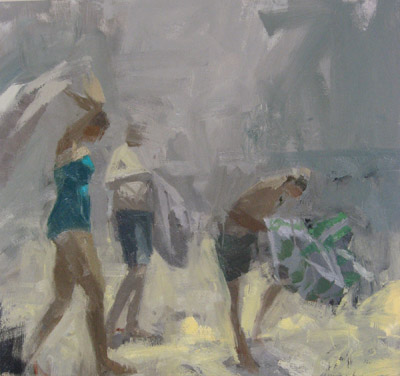

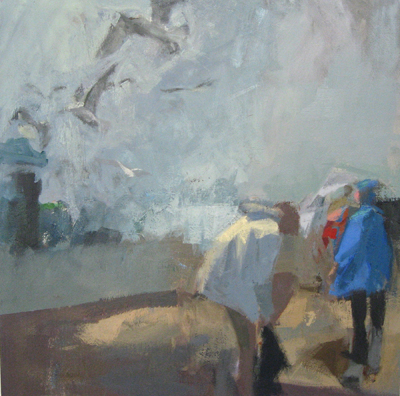
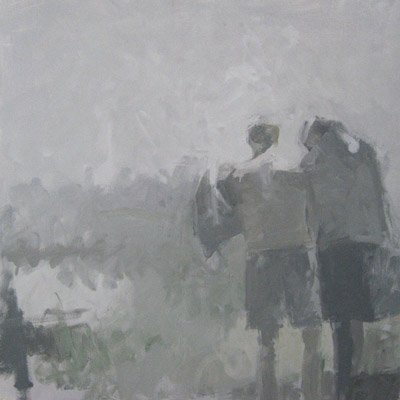
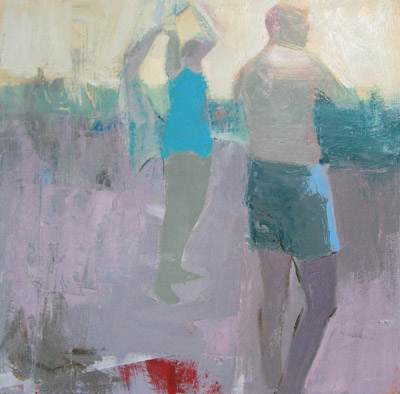
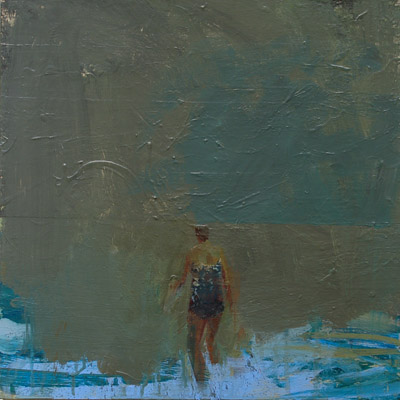
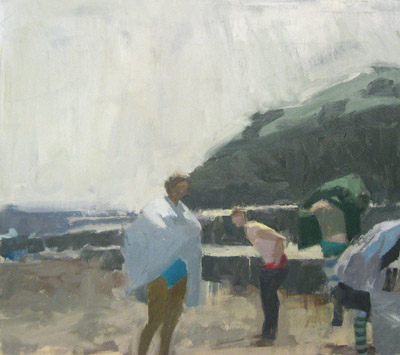
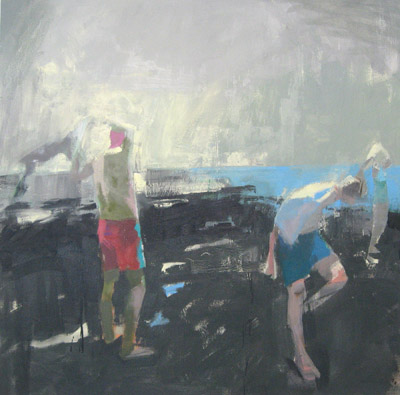
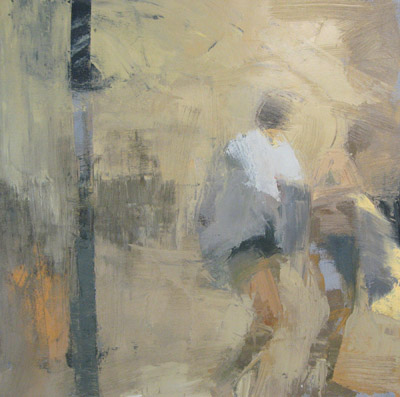
ONE SENSES TIM TOZER‘S ATMOSPHERIC SEASCAPES before comprehending them. Expressionistic and abstract, the paintings evoke a strong sense of place one where the air is thick with moisture, heavy, gray intermittent clouds burnish a bright sun, and the wind vigorously attacks beachgoers from every direction. Perhaps it is because I spent youthful summers on the dune-lined beaches of Truro and Wellfleet, Cape Cod, that Tozer’s subject matter in Heavy Weather is hauntingly familiar and provocative. I hear the snap of a brightly striped beach towel in the unforgiving wind, feel sand gritty in my teeth, and remember that the ocean never really warms, even in July. However, the thirteen paintings comprising Heavy Weathervariously oil on canvas or panel, or acrylic on panelare not of a blustery northern Atlantic coastline in midsummer, but rather of the ribbon beaches of Tozer’s native Portsmouth, UK, skirting the English Channel. Although located in a general time and place, Tozer’s paintings are not autobiographical in intent, nor do they depict specific events of the artist’s past. Rather, they are a poetic manifestation of pure memorya visual remembrance lodged in and blurred by recollection and time.
Tozer anchors his work in the centuries-old genre of the bather. Appropriating this commonly known archetype of Western painting, he repurposes “the bather.” In Tozer’s paintings, the artist uses the figure as a conduit for multiple past experiences, collapsed by time into one distilled moment, rather than employing “the bather” as iconic symbol of unfettered existence of joie de vivre – as did Matisse and Picasso, to name only two. Tozer’s paintings are deftly executed and informed by a psychological immediacy that is both tactile and seductive. Ruggedly beautiful but unsentimental, the works’ formal rigor and a technical fluency render the commonplace unexpected, even evocative. Tozer’s broad, expressive brushstroke patches together the sky and the land in a muted, monochromatic weave of blue, grey, and brown, sharpened only occasionally by a turquoise bathing suit or bright blue jacket. The more abstract works only snap into focus from a distance and, often, a figure or object slowly reveals itself. Impressively, the small works, barely a foot square, carry equal visual weight as the largest, which measure more than five feet to a side.
While all Tozer’s work is compositionally resolved, of particular note is the oil on canvas, Solent Sound. Depicting the channel between the Isle of Wight and the mainland, the painting’s forceful compelling composition is mediated by Tozer’s seemingly effortless, animated brushwork and sense of light. On the beach before a steep terrain of seaside cliffs, three bathers pull on their clothes in the wind, and a fourth is shrouded in a towel. The glare of the sun behind the clouds catches the edges of the figures and throws the landscape into high relief. It is a striking work that conveys as much about the act of painting, and paint’s ability to create a sensory landscape, as it does about a specific place is southwest England. Similarly, in the expansive Distant and Savage Land, the viewer has entered the seascape; we are participants, not observers, in a group moving about along a serpentine orange wind fence. Even the modestly scaled The Bather is injected with a physical and psychological weight. Here, from a bird’s eye perspective we see a female bather at water’s edge, as if standing at the great abyss. The figure’s isolation and solitary confrontation with nature references the sublime, suggesting a latter-day interpretation of the 18th century Northern Romantic aesthetic as practiced by such painters as Casper David Friedrich.
Tozer’s work raises the question: can work in this traditional genre be evocative and fresh for the early 21st century, casting off the tethers of past conventions? Tozer describes the act of painting the figure in the landscape as a “quaint” pursuit. His challenge was to move beyond that tired quaintness and reinvigorate the conventional motif, on his own terms, with a heightened formal language that is not cloying or derivative. Through his aggressive brushstroke and layering of paint, and the anonymity of the figure, he has constructed a dynamic, highly associative body of work that may be evocative and sensual but which disallows any preciousness or sentimentality. A realityeven a believabilityinforms these works, yet they offer up a compelling sensory experience that is universal rather than personal, more abstract than specific. In the end, we are not outside of but enveloped by Tozer’s seascapes. What lies beyond the painting’s edge is tempting, a mystery. The complex sensory experience of striking vistas, overcast beaches, voices muffled by the wind, and salty air punctuated by the sharp calls of seagulls is palpable. Tozers achievement is that we are not simply a voyeur witnessing another enervated, rendition of the figure in the landscape. Rather, we are the bathers; we are there.
About the writer: Mason Riddle is a critic and writer on the arts, architecture, and design. She is the current president of the Visual Arts Critics Union of Minnesota.
What: Tim Tozer: Heavy Weather
Where: Groveland Gallery (Annex), Minneapolis, MN
When: Exhibition runs through July 12
Admission is FREE and open to the public